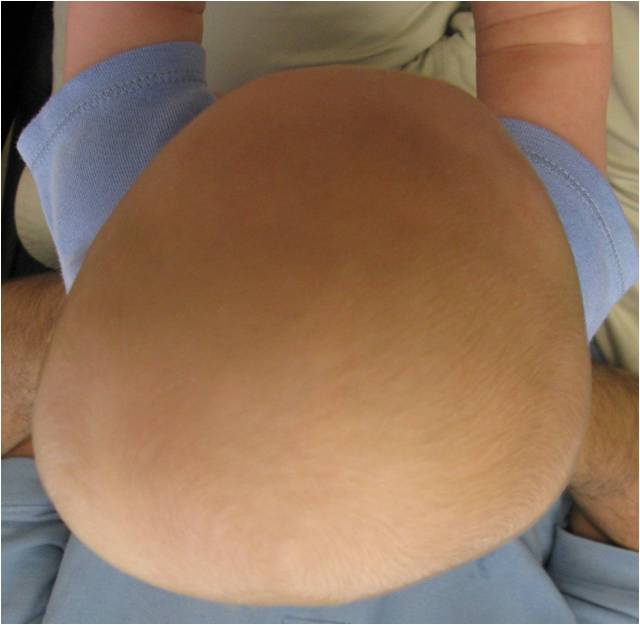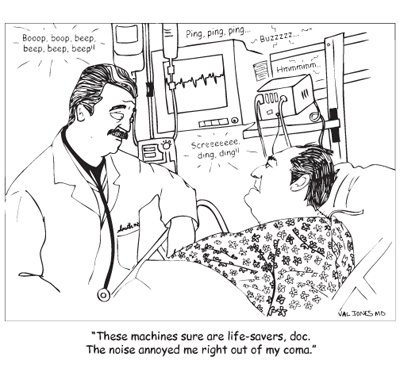March 31st, 2011 by admin in Health Policy, Health Tips, Research
No Comments »

By Richard C. Hunt, MD, FACEP
Centers for Disease Control and Prevention
A 17 year-old athlete arrives on the sideline, at your office, or in the emergency department after hitting her head during a collision on the sports field and is complaining that she has a headache and “just doesn’t feel right.”
Can she return to play? If not, when can she safely return to school, sports, and to her normal daily activities? Does she need immediate care, a Head CT or MRI, or just some time to rest?
Do those questions sound familiar?
Each year thousands of young athletes present at emergency departments and in the primary care setting with a suspected sports- and recreation-related concussion. And every day, health care professionals, like us, are challenged with identifying and appropriately managing patients who may be at risk for short- or long-term problems.
As you know, concussion symptoms may appear mild, but this injury can lead to significant, life-long impairment affecting an individual’s ability to function physically, cognitively, and psychologically. Thus, appropriate diagnosis, referral, and education are critical for helping young athletes with concussion achieve optimal recovery and to reduce or avoid significant sequelae.
And that’s where you come in. Health care professionals play a key role in helping to prevent concussion and in appropriately identifying, diagnosing, and managing it when it does occur. Health care professionals can also improve patient outcomes by implementing early management and appropriate referral.
As part of my work at CDC, and as a health care professional, I am committed to informing others about CDC’s resources to help with diagnosing and managing concussion. CDC collaborated with several organizations and leading experts to develop a clinical guideline and tools for the diagnosis and management of patients with concussion, including:
For more information about the diagnosis and management of concussion, please visit www.cdc.gov/Concussion/clinician.html.
Also, learn more about CDC’s TBI activities and join the conversation at: www.facebook.com/cdcheadsup.
March 29th, 2011 by admin in Health Policy, Opinion
1 Comment »

According to American Medical News, the U.S. health system is demonstrating better performance on most measures of health care quality, but it’s failing to improve access to care or cut racial and ethnic health disparities, according to two reports released in February by the Agency for Healthcare Research and Quality. “Quality of care continues to improve, but at a slow rate,” said Ernest Moy, MD, leader of the team at AHRQ that produced the reports. ”In contrast to that, focusing on issues of access to care, not much has changed. Focusing on disparities in care, not much changed…Those are bigger problem areas than overall quality of care.” Measures related to hospital quality are showing the most improvement. For example, in 2005, just 42% of patients with heart attacks received angioplasties within the recommended 90 minutes of arriving at the hospital. That figure improved to 81% by 2008.
While the quality improvement indicators are encouraging, the disappointing access and disparities numbers are not very surprising.
The US health care system is still largely focused on acute hospital based care. It says we are doing better at what we are doing. Read more »
*This blog post was originally published at CFAH PPF Blog*
March 29th, 2011 by admin in Health Policy, News, Opinion
4 Comments »

 More and more patients these days are seeing their physician pull out an iPhone or iPad to look up drug dosing information, review lab and radiology data, or help teach them more about their medical condition. And as developers, and the increasing number of physician-developers, continue to find more creative ways to bring medical resources to the point of care, we can certainly expect smartphone platforms and medical apps to become pervasive at the bedside. However, just as healthcare providers and patients are noticing this trend, there are number of others who are paying attention as well – for WebMD, one of the largest companies in this industry, it is the lawyers who may be watching that are worrisome.
More and more patients these days are seeing their physician pull out an iPhone or iPad to look up drug dosing information, review lab and radiology data, or help teach them more about their medical condition. And as developers, and the increasing number of physician-developers, continue to find more creative ways to bring medical resources to the point of care, we can certainly expect smartphone platforms and medical apps to become pervasive at the bedside. However, just as healthcare providers and patients are noticing this trend, there are number of others who are paying attention as well – for WebMD, one of the largest companies in this industry, it is the lawyers who may be watching that are worrisome.
As they put it in their annual statement to the SEC,
If our content, or content we obtain from third parties, contains inaccuracies, it is possible that consumers, employees, health plan members or others may sue us for various causes of action.
We’ve talked in the past about potential liability issues for healthcare providers using medical apps and the developers who produce them, as well as similar issues related to electronic health records. The fact that WebMD found the issue significant enough to report it to the SEC and their investors clearly indicates the issue is still unresolved and the remainder of their statement adds some further interesting perspective. Read more »
*This blog post was originally published at iMedicalApps*
March 21st, 2011 by admin in Health Tips, True Stories
5 Comments »

Figure 1
This post was contributed by guest blogger, Edward Ahn, M.D.
The head coach of a Division 1 champion women’s sports team brought her baby daughter in to me for evaluation of her flat head at the recommendation of her pediatrician.
While I was examining her baby, I started to say, “Well, I’ll tell you what she has —
She quickly interrupted, “Is it bad?”
I looked up to see fear written on this tough coach’s face. I was struck by how this benign condition can cause apprehension in so many parents.
Often, pediatric neurosurgeons like me or plastic surgeons are asked to assess babies with a flat head, also known as positional plagiocephaly. Usually, parents have developed a fair amount of anxiety, often with the underlying fear that their baby will need surgery or the brain will grow abnormally. These fears are not warranted. Read more »
February 25th, 2011 by admin in Book Reviews, True Stories
No Comments »


This is a guest post by Dr. John Schumann.
**********
I just read the book “365 Thank Yous” by John Kralik. I heard an interview with the author on NPR and it caught my attention.
Kralik had been down on his luck in 2007: Divorced twice, overweight, with a struggling law firm that he’d started, he was also failing in a new romantic relationship. He was worried about losing his seven-year-old daughter, too, in a custody dispute.
He made a momentous decision: Instead of feeling sorry for himself (easy to do given his predicaments), he decided to be grateful for what he had. To show it, he vowed to write a thank-you note every day for the next year. What do you think happened?
His life changed for the better. His relationship improved. His clients started paying their bills and his firm’s financial footing solidified. His health improved. He eventually achieved his lifelong dream of becoming a judge. To top it off, he turned his personal quest into a writing project. Within minutes of writing a book proposal, he received responses from agents who hoped to shepherd his project. Every writer’s dream.
I’ll grant you that it sounds hokey. But there are a couple of things the book demonstrated to me. Read more »
*This blog post was originally published at ACP Internist*

















